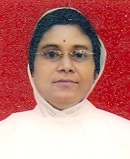Special qualities possessed exclusively by Pudgala are four, viz. touch, taste, smell, colour.[8] Pudgala in its atomic and subtle forms cannot be perceived by sense-organs yet, all modifications of it, be it a single atom or cluster composed of two to infinite number of atoms, do possess these four characteristic qualities. These qualities are inbuilt and do not depend for their existence upon the percipient.
Along with the four there are a number of other qualities. Of these attributes some are innate while, some are only modifications of it. Touch, taste smell and colour are innate while, sound, light etc. discussed latter on are only modifications. The four innate qualities are divided into twenty categories, viz; eight kinds of touch + five kinds of taste + two kinds of smell + five kinds of colour[9] as given below in Table-4.
| Table No. 4 | ||
|---|---|---|
| Characteristic Qualities | Types | Name |
| Colour | Five types | Black, blue, red, yellow and white |
| Taste | Five types | Sweet, bitter, sour (acrid),acidic and astringent |
| Smell | Two types | Pleasant and unpleasant |
| Touch | Eight types | Hot, cold, viscous (sticky),dry, hard, soft, light and heavy |
Out of the twenty the five elementary colours, five elementary tastes, two kinds of smell, and four elementary touches i.e. hot, cold, dry and viscous, make a total of sixteen varieties of characteristic qualities of all classes of Pudgala.[10 ]The thing worthy to note here is that originally the quality touch is of four kinds, viz; hot, cold, dry and viscous. The rest four kinds i.e. hard, soft, light and heavy are due to the combination of the abovesaid four elementary touches. It means whenever the proportion of dryness increases the object would be the light and whenever the proportion of viscosity increases the object would be heavy. Moreover, combination of coldness and viscosity results in production of soft touch. Likewise, combination of hotness and dryness results in production of a hard touch.[11] It is the permutations and variations of the basic touches which cause the latter four which are found only in a composite body and not in an atom.
Though these 20 characteristic qualities are the principle division. Each of these may be further subdivided into numerable, innumerable and infinite types depending on the gradation of each quality. As the Bh.S mentions there are infinite number of atoms because of having difference in the degrees of their properties. For example, whereas one atom is possessed of one degree of colour, the other one is possessed of two degrees. Likewise, the third and the fourth one are having three and four degrees respectively and so on.[12] Like colour there is also difference of taste of one degree to infinite degrees, so with touch and smell of atoms and aggregates of the physical world. Possession of these qualities makes Pudgala perceivable by sense organs. Out of the five reals accepted in Jain philosophy, Pudgala alone is the substance which has the quality to be the object of sensuous cognition.[13] As already indicated, atoms and some sort of material clusters are not perceivable yet, they retain all these four qualities essentially.
Moreover, unlike the Vaishesika conception all the four qualities are concomitant. No modification of matter is such that possesses only three, two or one of the four qualities. Nor is there only substance other than matter that can possess any one of the physical qualities. The Vaishesikas hold that the atoms of air are devoid of colour, taste and smell. They have only the characteristic of touch. The atoms of fire are devoid of taste and smell qualities and, possess touch as well as colour. Similarly, water possesses taste, colour and touch only. Earth is only the substance that possesses all the four qualities i.e. colour, touch, taste and smell.[14]
 Dr. Samani Chaitanya Pragya
Dr. Samani Chaitanya Pragya

